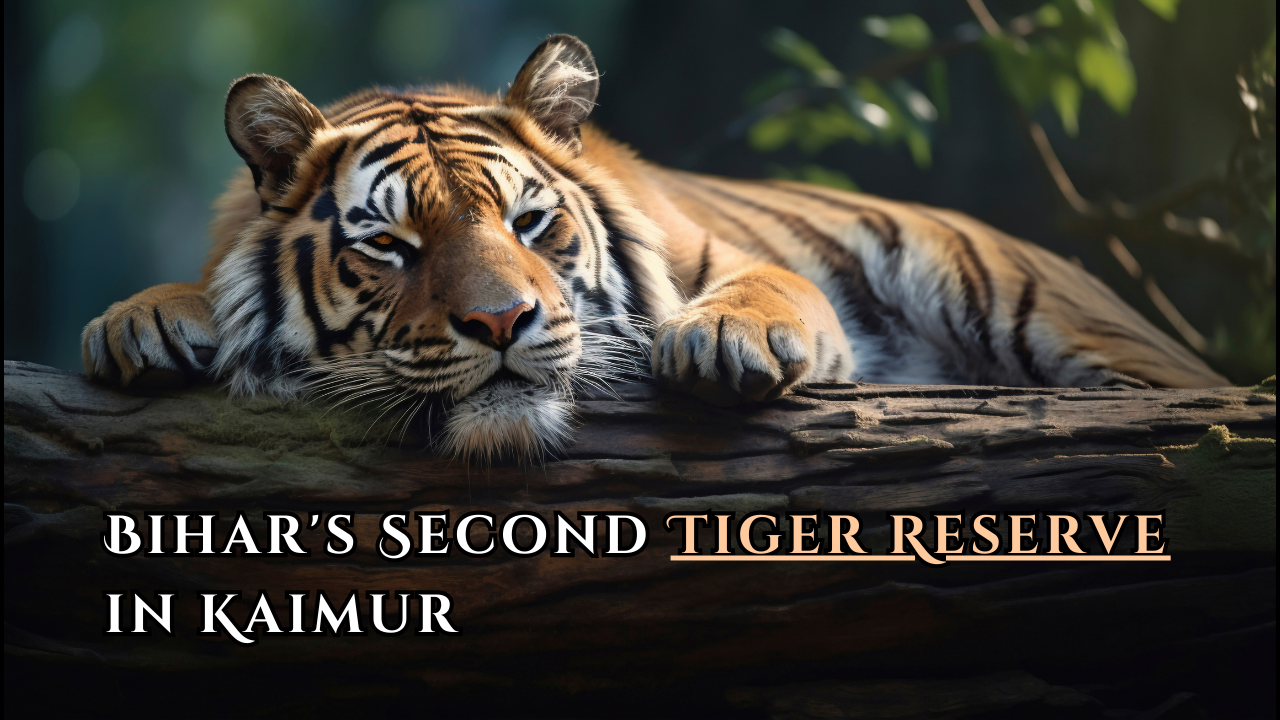Font size:
Print
Bihar’s Second Tiger Reserve in Kaimur
Context:
The central government has approved the establishment of Bihar’s second tiger reserve in Kaimur district following the proposal by the Bihar government. This development arises from the need to manage the growing tiger population in the Valmiki Tiger Reserve (VTR), which has exceeded its capacity.
Approval of Kaimur Tiger Reserve:
- In-principle approval from the National Tiger Conservation Authority (NTCA) at its 12th meeting.
- Official confirmation by Bihar’s Forest, Environment and Climate Change Minister.
- Additional technical approvals required before a formal declaration.
Valmiki Tiger Reserve’s Overcapacity:
- VTR, located in West Champaran district, was Bihar’s only tiger reserve.
- VTR’s tiger population has grown to 54 tigers, exceeding its capacity of 45.
- The Status of Tigers Report 2022 highlighted the tiger population increase at VTR from 31 in 2018 to 54 in 2022.
Kaimur Wildlife Sanctuary’s Development:
- Kaimur Wildlife Sanctuary (KWLS) will be developed into the new tiger reserve.
- A tiger relocation plan will transfer some tigers from VTR to Kaimur to manage population pressure and maintain an eco-friendly environment.
Proposal History and Wildlife Significance:
- The proposal began in 2018, following sightings of tiger pugmarks and prey remains in KWLS.
- Kaimur has 1,134 square kilometres of forest, the largest in Bihar, with 34% green cover.
- It connects with wildlife corridors in Jharkhand, Uttar Pradesh, and Madhya Pradesh.
- Shergarh Fort and 58 villages are included in the buffer zone, while 450 sq km of forest is designated as the prime tiger habitat.
Challenges and Adjustments:
- Earlier objections from the NTCA led to reducing the core area from 900 sq km to 450 sq km.
- The sanctuary’s potential as a tiger reserve was confirmed by a team of experts led by AJT Johnsingh, former Director of the Wildlife Institute of India (WII).
Subscribe to our Youtube Channel for more Valuable Content – TheStudyias
Download the App to Subscribe to our Courses – Thestudyias
The Source’s Authority and Ownership of the Article is Claimed By THE STUDY IAS BY MANIKANT SINGH





